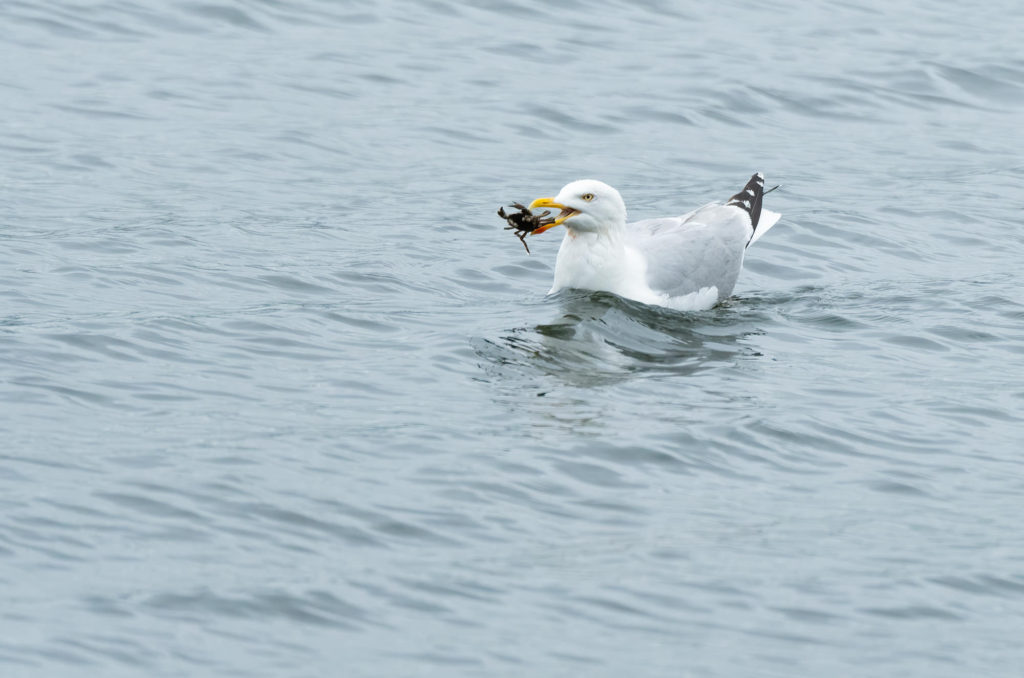Does anyone else remember that McCain advert from the 1990s in which a girl is asked to choose between her daddy or chips? If you haven’t seen it, after taking a while to make up her mind little Sophie eventually plumps for chips. I was recently thinking about this while watching the herring gulls on a hot and sunny day in the popular seaside resort of Largs. While a few birds were waiting to be hand-fed chips, most didn’t seem too keen on taking up the offer and preferred to watch proceedings from a distance, waiting for a dropped morsel. We certainly did not see anyone attacked by the gulls in the hours we spent wandering along the seafront. Most actively avoided human contact – waiting for the coast to be clear before scuttling under a table to devour an abandoned crust.
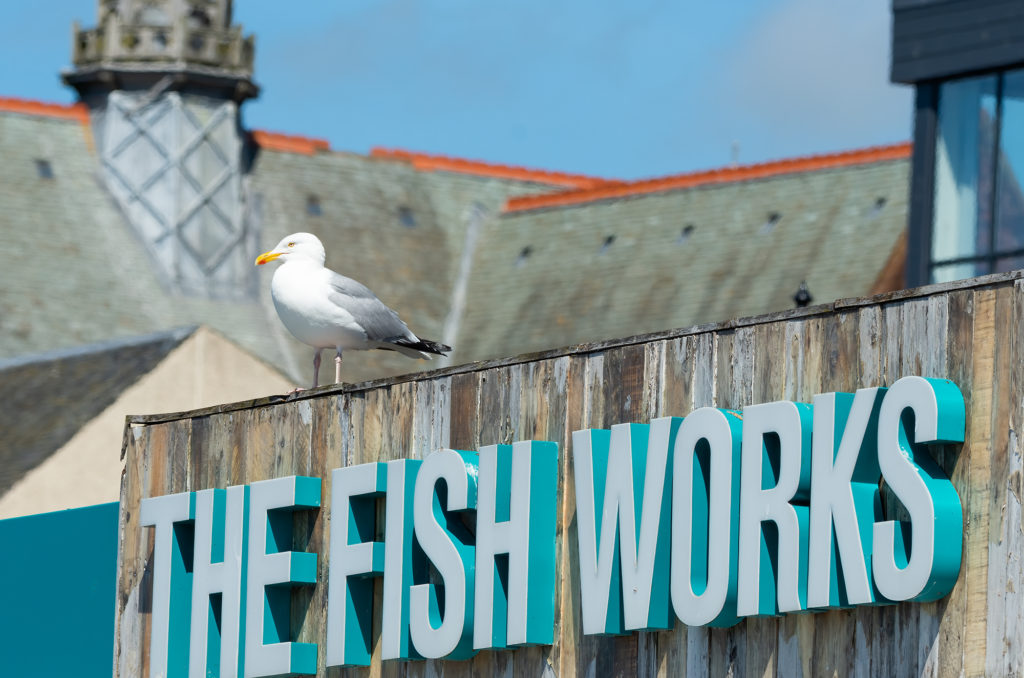
As I wrote in my recent Mussel bound blog, not all gulls are obsessed with stealing our food. Many prefer foraging for more natural food than feeding on our waste, like the bird in the images below. Several herring gulls were floating around pecking at the seaweed and looking for anything tasty when I was fortunate to spot this individual with a crab. For a moment, it seemed as though it had dropped it in the water before it snapped it back up. I was then able to capture the process of it eating the crab whole. To say it seemed hard to swallow would be putting it mildly – watching it made me retch!
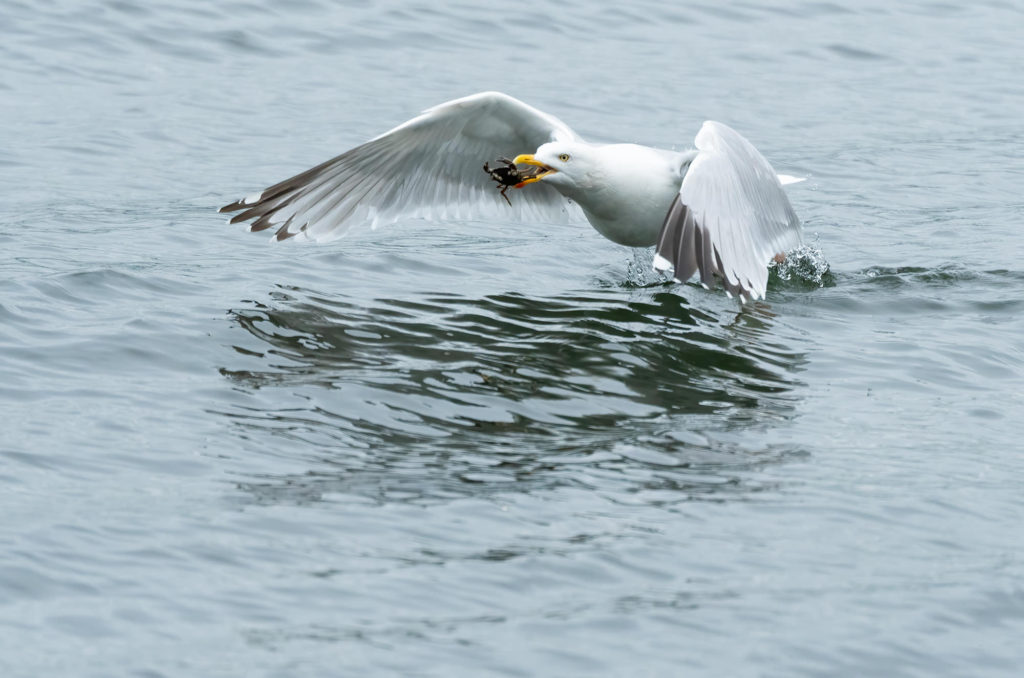
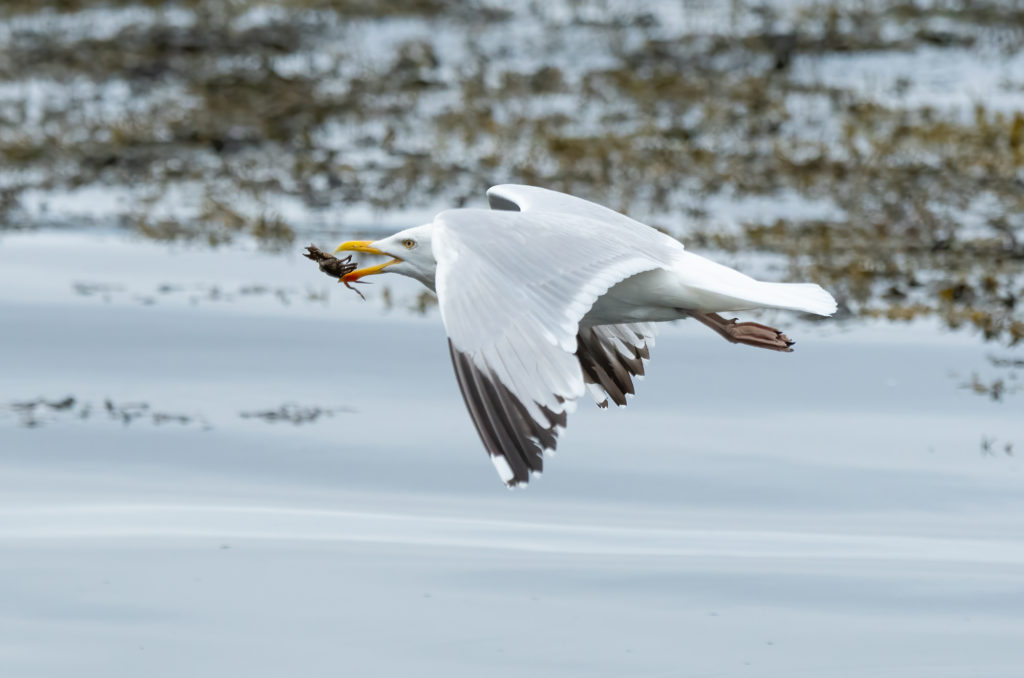
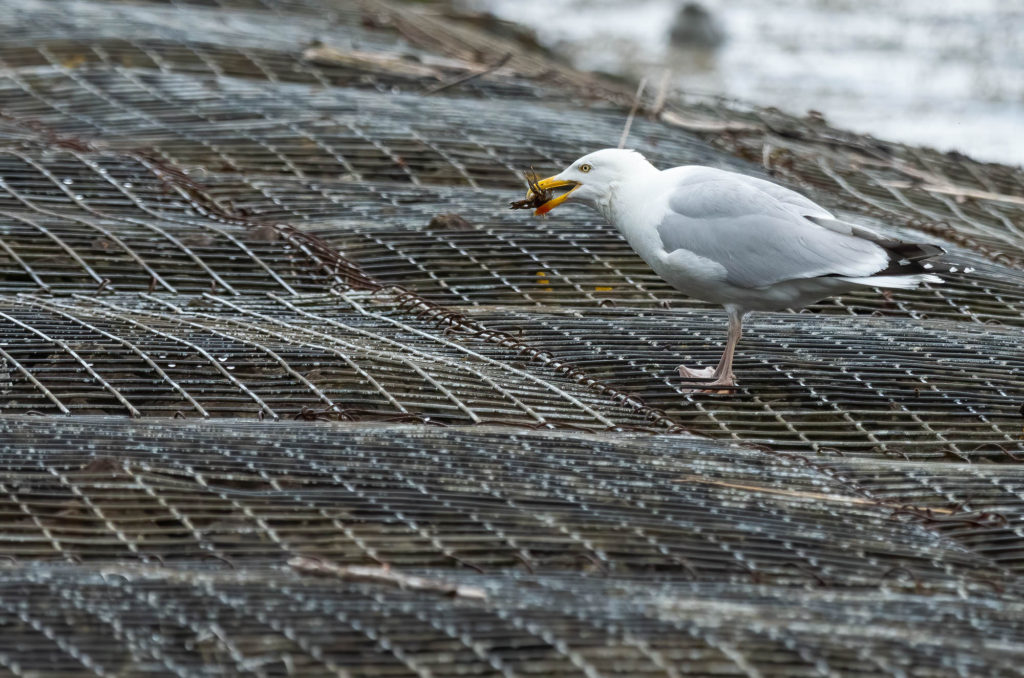
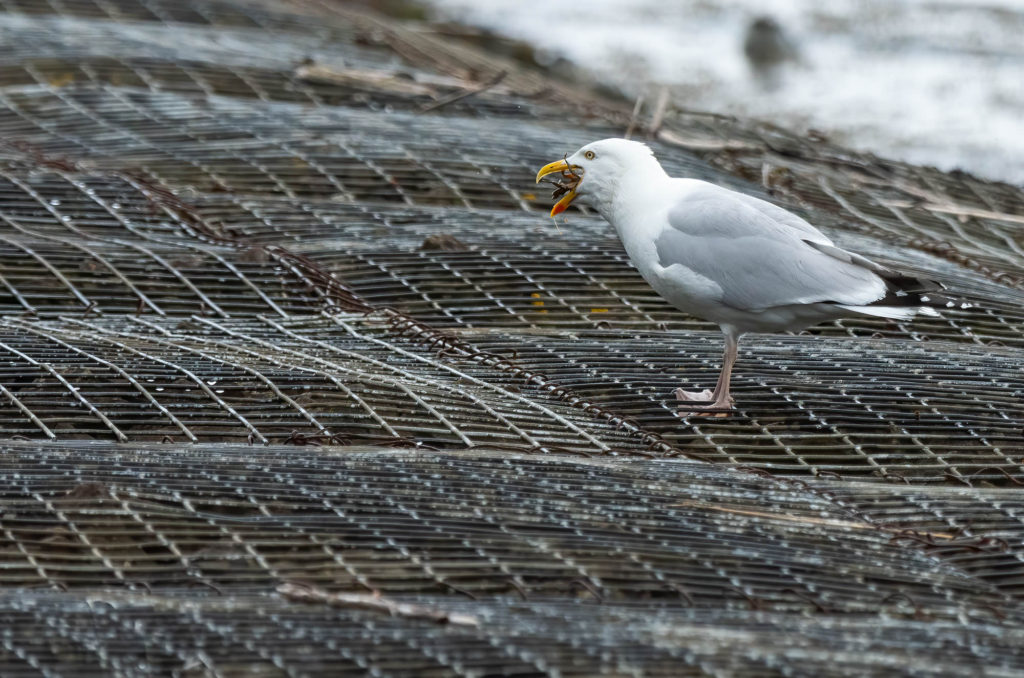
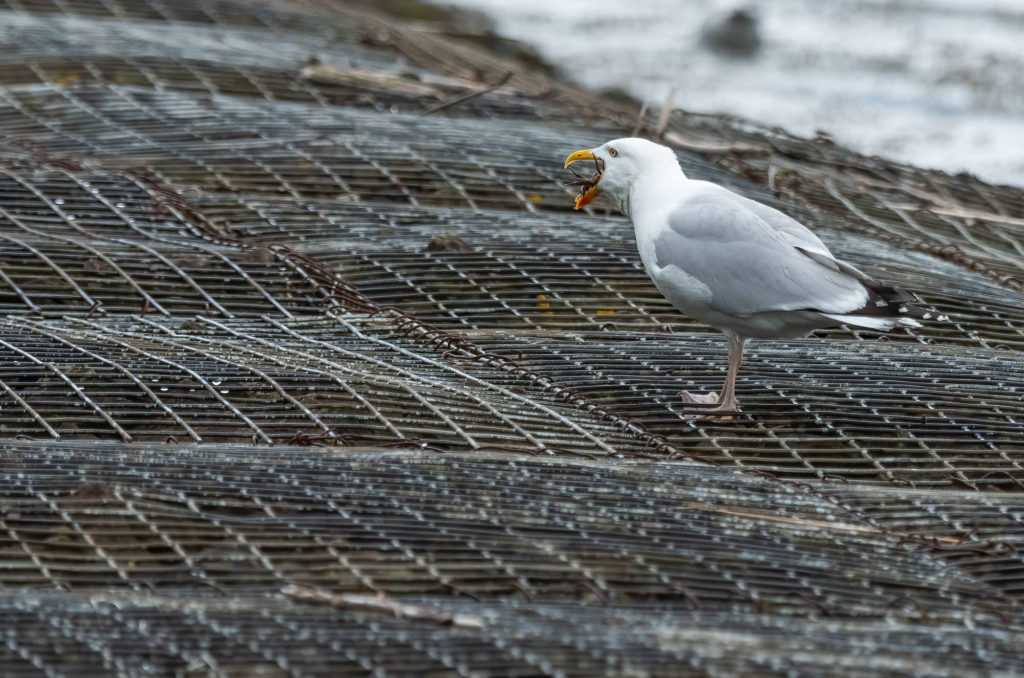
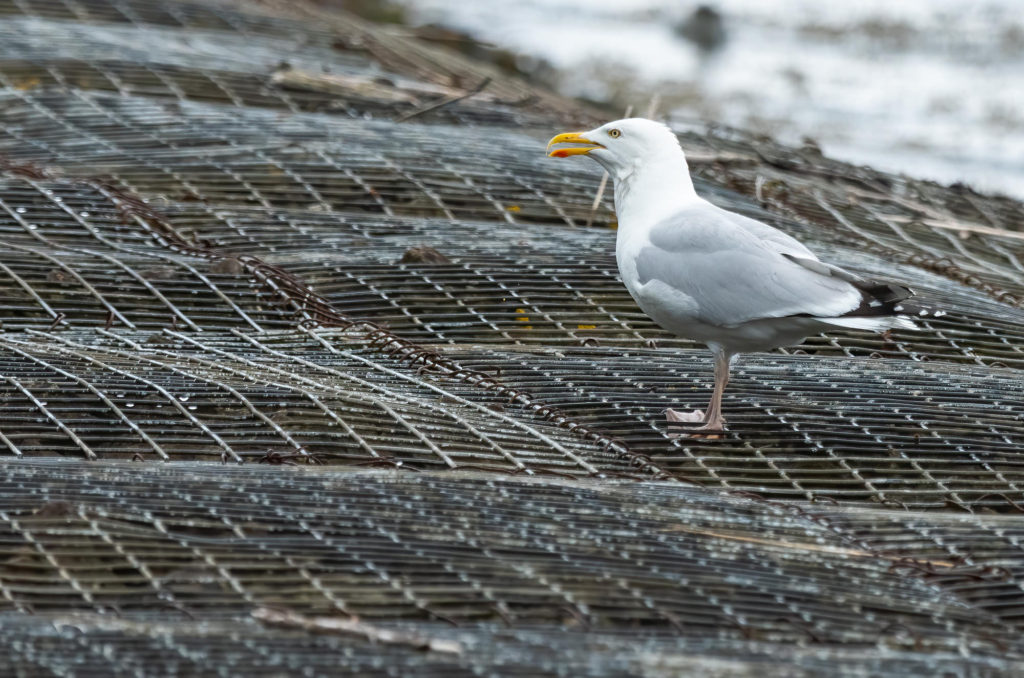
Unfortunately, the simple fact that many gulls would prefer to eat more natural food and the knowledge that many gull attacks relate to them being fearful for their offspring does not sell papers or encourage people to click on links. Stoking hatred for gulls seems to work much better for the newspapers. That said, I am grateful to The Guardian for this piece they published yesterday: Gull poo pollution warnings on Scottish beaches ‘out of proportion’, say experts. The piece refers to the Keep Scotland Beautiful’s My Beach Your Beach campaign, which manages to demonise gulls in a passive-aggressive sort of way. I have seen the posters on bins and signs around the beaches and can confirm that the messaging seemingly encourages people to think badly of gulls and even fear them.
But the really odd bit is the messaging around gull droppings (or guano): “Don’t feed the gulls. Bird poo contributes to water pollution”. Ok, but surely they go to the toilet anyway, whether we feed them or not? And hasn’t gull poo always been in the sea? I mean, they are called seabirds for a reason, right?
Then you read the comment from the Keep Scotland Beautiful spokeswoman, and it all makes sense:
“Gull and dog poo have been found to contribute to bathing water contamination and can affect bathing water classifications.”
Ah, ok, so it’s only a problem because we want to be in the water. I think that if you want to swim in the sea, you should be willing to do it happily alongside everything that is naturally in there, such as gull poo, jellyfish and great white sharks. If I swam regularly in the sea, I would be a lot more concerned about the raw human sewage, bags of dog poo, plastic and other rubbish we keep dumping there. But maybe that is just me.
Concerning my earlier point around gull dining habits, The Guardian article also quotes Dr Viola Ross-Smith, a gull expert from the British Trust for Ornithology. She commented:
“Gulls are with us all year round and it’s only this time of year that they get a bad press. It’s the end of breeding season, so birds are trying to defend fledgling chicks, but this coincides with the start of the summer holidays and at tourist hotspots some birds are specialised in pilfering food. But only certain birds do it, and many won’t touch human food.”
Mark Lewis, Scottish Ornithologists’ Club birding and science officer, said in a related BBC article, “at this time of year they are feeding their young so are more interested in finding natural gull food such as small prawns and crabs.”
Whatever your thoughts on their eating, breeding and toilet habits, I would recommend gulls as a subject for many reasons, particularly if you are developing your wildlife photography skills:
- They are charismatic, meaning that you can frequently get images of unusual behaviours
- They glide and fly at quite a slow pace, so they are a perfect subject to practise capturing birds in flight
- They appear in both urban and rural environments, making for interesting habitat images
- The larger species, in particular, are confident and fairly comfortable around humans, so getting close isn’t usually an issue.
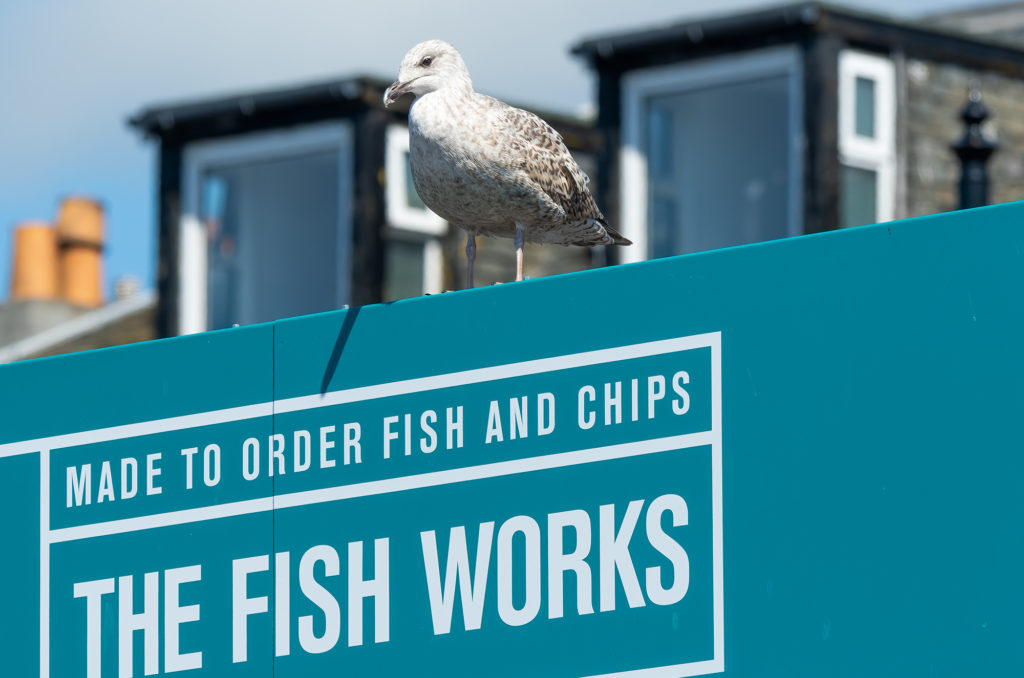
I will end with a quote from an RSPB spokeswoman in the BBC article, which sums up perfectly the message I would like to pass on to those who seem determined to be at war with these seabirds:
“Gulls need our help, or at least our tolerance, all the species breeding in the UK are of conservation concern with some in very serious trouble.
“Gulls have traditionally lived along our coastlines, we can help by learning to live alongside them.”


